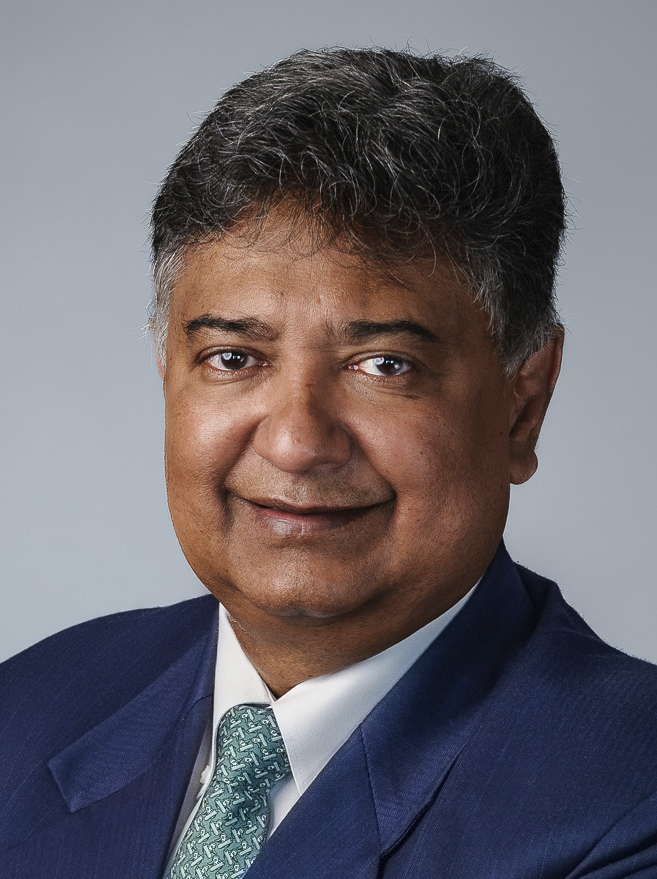An improving economic environment and subdued inflation allow banks to search for new growth avenues.
The post-pandemic inflation that tormented consumers and politicians in many economies was an enormous gift to banks. Rapid rate hikes by the US Federal Reserve (the Fed), European Central Bank (ECB), and other authorities enabled banks to raise their own interest rates faster than their deposit rates, leading to an avalanche of net interest income and record profits.
Now the party is winding down as inflation recedes and central banks ease up, but not too fast. The Fed’s key interest rate is now at 5%, compared to 0.25% in early 2022. The ECB’s rate is now at 3.4%, after having reached 4.5% in September 2023 and stayed there until a series of cuts began in June of this year. “The general mood is cautiously optimistic,” says Jens Baumgarten, Frankfurt-based global head of financial services at consultancy Simon-Kucher & Partners. “We’re not going back to the horror scenario when bankers were asked to make bread without flour.”
Rumors of recession have meanwhile proved exaggerated across major economies, leaving banks’ asset quality in good shape. “The important question is why interest rates are dropping, and right now they are dropping because the economy has proved resilient,” remarks Sandeep Vishnu, a San Francisco–based partner at consultant Capco.

One conspicuous vulnerability for US and European banks is the area of commercial real estate loans, which seems to be easing—or at least not deteriorating. “It looks like some light is showing at the end of the commercial real estate tunnel,” says Johann Scholtz, who follows European banks for market analyst Morningstar. “Offers to buy assets are falling into line. The market is rightsizing.”
Fears of a crisis in midsize US banks exploded in March 2023 with the sudden collapse of Silicon Valley Bank (SVB) and two others. That seems a distant memory now. The Fed deftly managed acquisitions by stronger partners, and competitors have quietly hedged the bond portfolio mismatches that started the trouble at SVB. “There were factors very specific to these institutions,” says Christopher Wolfe, head of North American banks at Fitch Ratings. “Other banks learned some lessons and are in better position to manage the downward rate trajectory.”
News from the rest of the world is also broadly positive. Big Japanese banks are growing their loan books at a 6% annual pace, the fastest in decades, as interest rates nudge above zero and animal spirits spread among their corporate customers, says Nana Otsuki, a senior fellow at Pictet Asset Management in Tokyo. “Corporates have become more aggressive, wanting to borrow more now rather than waiting,” she says.
Indian banks’ loan growth is roaring at double digits as state banks fund Prime Minister Narendra Modi’s infrastructure drive and private ones ride a consumer credit wave, according to Aditya Gupta, who manages the Simplify Tara India Opportunities ETF out of Mumbai. The bank scandals and busts of the 2010s are all but forgotten.
Even in China, banks are getting some respite from the intertwined crises of real estate and local government debt, as the central bank cuts interest rates and lowers reserve requirements, among other measures. “The central bank has become more active in injecting liquidity, and banks are seeing less immediate pressure on their liabilities,” says Logan Wright, who leads China markets research at New York–based Rhodium Group.
Some Cautionary Signs
Not that bankers are ending 2024 worry free. The macroeconomic soft landing is still far from certain, particularly in the euro area, which has been sputtering at the edge of recession for the past year. The razor’s-edge US election could take the world’s biggest economy in unpredictable directions. China looks increasingly unreliable as an alternative global growth driver. Tensions in the Middle East oil bucket are unabating. “We are not out of the woods with respect to the prevailing operating environment,” notes Amit Vora, global head of credit and lending solutions at Mumbai-based global analytics company CRISIL, a subsidiary of S&P Global.
Localized risks lurk within robust national systems. Japanese regional banks are struggling even as the big banks are thriving, Otsuki says. Customer bases are literally shrinking in many provincial areas.
The main growth driver for Indian private sector banks is unsecured personal loans, often to novice borrowers with short credit histories, Gupta notes. The mortgage market, though also expanding, is too competitive for banks to make much margin. The Reserve Bank of India “began sounding the alarms” a year ago about unsecured lending, which was growing at more than 20% a year, says Gupta. Since then, “banks have started to sound a little cautious on asset-quality issues.”
US consumers have been releveraging, too, despite elevated borrowing costs, creating a potential trouble spot if the economy dips, Wolfe says. “Loss rates on credit cards and auto loans look unsustainably low,” he comments. “Card defaults are right at prepandemic levels but continuing to deteriorate.”
China has slapped some Band-Aids on its multifarious financial mess but lacks the transparency for a comprehensive cleanup, according to Wright. “Local governments don’t want the [central government] to know how much debt they have, and the [central government] wants to keep it ambiguous how much support it will give,” he says.
Battling Nonbanks With AI
Global banking’s biggest challenge, though, remains losing market share to nonbank financial institutions (NBFIs) in two core competencies: lending and payments. Lending at the top-15 US banks increased by an anemic 0.9% year-on-year in the most recent measured quarter, according to S&P—a natural consequence of tighter money. Private credit AUM continued to surge by double digits to nearly $2.5 trillion, according to BNY Mellon data. “The growth of private credit is one of the big themes now,” CRISIL’s Vora says. “Banks have not been best placed to meet many borrowers’ needs.”

proved resilient.
Incursions by nonbank payment systems are still more dramatic. “Adoption of payment apps—including Venmo, Apple Pay, Google Pay, or Cash App—now rivals adoption of credit cards,” a core business for banks, Undersecretary for Domestic Finance Nellie Liang recently told a symposium hosted by the Federal Reserve Bank of Chicago. Experience beyond the US is the same or worse, from the banks’ point of view, with services from Kenya’s M-PESA to China’s Alipay becoming the standard.
That leaves banks wondering how to grow—particularly incumbent brick-and-mortar banks, which are also under attack from newborn online-only rivals like Nubank in Latin America, Revolut in Europe, and Rakuten in Japan. “Banks’ next challenge will be avoiding a postgrowth scenario,” Morningstar’s Scholtz predicts.
With top-line expansion hard to come by, and no immediate crisis to combat, bankers are renewing their focus on technology to squeeze costs and enhance customer interaction, Vora says. “Clients are telling us now is the right time to reflect on how they are set up, to undertake transformation across the board,” he adds.
Generative artificial intelligence (GenAI), the tech that has the world abuzz, could turbocharge that effort, Capco’s Vishnu suggests. “A GenAI bot could produce the first draft of a credit narrative in 60 seconds,” he explains. “Add review by the loan officer, and the whole process is down to 30 minutes from half a day now.”
Simon-Kucher’s Baumgarten states the case more starkly: “Bankers need to be replaced, but not by humans.”
Better technology could also help banks individualize customer relationships—tailoring rates and product offerings to specific needs—and win back some of the turf grabbed by nonbank “originators,” Baumgarten adds. “Banks are sitting on a huge treasure chest of customer data,” he says. “A lot of them are using surprisingly outdated tools to work with it.”
Given the warp speed of GenAI development, though, today’s expensive, cutting-edge IT investment could be tomorrow’s surprisingly outdated one. “Banks are not in a hurry” to transform, Vora says. “They want to develop something bespoke, not grab a third-party solution.”
Another avenue to growth is joining forces with nonbank competitors, funneling banks’ cheaper, deposit-driven capital into lending structures that may be more dynamic. That’s not a new phenomenon. US bank lending to NBFIs has tripled over the past decade to $300 billion and now accounts for a quarter of the banks’ term loans, the New York Fed reports.
Growth In Private Credit Tie-Ups And M&A
New tie-ups between big banks and private credit are making headlines, though. Citigroup announced in September that it will partner with private equity giant Apollo Global Management on a $25 billion fund. JPMorgan reportedly followed with its own $10 billion private credit vehicle.
Regulators are starting to express concern about these bets by deposit-insured banks. “A key observation is that nonbank financial intermediation involves significant liquidity and funding risk,” the New York Fed’s economists write in its Liberty Street Economics blog.
Fitch Ratings is watching that space, too. “Understanding what’s going on with banks’ increasing participation in private credit is important to us,” Fitch’s Wolfe says.

But the rush into private credit has not stopped yet.
Strong balance sheets and constrained organic growth will also push banks toward growing by merger and acquisition, where politics allow it. Major banking deals have gone quiet in the US since a flurry of post-SVB acquisitions. But the enormous herd of smaller institutions continues to consolidate, down by 138 last year to 4,577 (including credit unions).
Japanese banks are keen to deploy capital into faster-growing Asian economies. Notable recent deals include Mitsubishi UFJ Financial Group buying into India’s DMI Finance, while competitor Sumitomo Mitsui Financial Group took a stake in Vietnam Prosperity Bank. More may well be on the way, Otsuki says. “Return on equity in Japan remains extremely low,” she notes. “The banks will be looking for M&A opportunities in the region.”
The unlikely hub of banking consolidation, however, could be Europe. Despite the European Union’s unified trade in goods, banks have remained locked within national borders, unable to match the scale of US peers. “Most European players are tiny dwarves compared to the US top five,” Baumgarten observes.
Italy’s UniCredit is looking to shake this status quo with a hostile bid for Commerzbank, one of Germany’s biggest. It’s bought nearly 10% of the target’s stock and asked German regulators’ permission to hike that to 30%. Success in this deal could open the door for a raft of cross-border mergers, in theory.
The Berlin government is less than enthusiastic about the takeover. But ultimate authority lies with the ECB, whose head, Christine Lagarde, is a vocal consolidation advocate. Morningstar’s Scholtz thinks Germany will have to back down. “The probability of the deal going through has increased,” he says. “It will come down to price.”
US Regulators Biting Hard
The spotlight for banking regulation has meanwhile shifted to the US federal prosecutors who rocked the financial world in October, forcing Canada-based TD Bank to pay $3 billion to settle charges of laundering money through its US network. The plea agreement also capped TD’s US assets, constraining its growth in the much bigger market.
A month earlier, Washington regulators found “deficiencies” in money laundering controls at Wells Fargo, one of the US giants. Wells Fargo has been under an asset cap of its own, imposed last decade for opening accounts without customers’ knowledge.
More systemic drama surrounds Washington’s implementation of the global Basel III accords on bank safety. In July of last year, the Fed floated a plan that would increase the biggest US banks’ capital requirements by a whopping 19%, provoking a firestorm of protest from financiers and their political allies. In September, Vice Chair for Supervision Michael Barr revised that down to 9% and exempted midsize banks, between $100 billion and $250 billion in capital, from any increase.
Barr’s proposed compromise satisfied no one. Democratic Sen. Elizabeth Warren condemned it as a “Wall Street giveaway,” while Bank of America CEO Brian Moynihan waxed ironic. “Show them death and they’ll take despair,” he remarked.
The battle continues. “An overwhelming concern among US bankers is whether they will be faced with new regulatory burdens,” Capco’s Vishnu comments. “And fines have gotten so big, they can wipe out all sorts of efficiency gains.”
Big banks turned to governments for rescue during the 2008 global financial crisis and have been living with the consequences ever since. Stiffer postcrisis regulation opened broad swathes of the lending market to less-encumbered nonbank competitors. The lower-for-longer interest rates deployed for postcrisis recovery bit into bankers’ margins. The global profusion of mobile internet access meanwhile enabled a new universe of digital-native rivals and challenged banks themselves to overhaul business models.
Resurgent inflation since 2021 has returned rates to something like historical norms, giving bankers back the flour they need for the bread of profitable lending. The other challenges remain very much in force. Private credit funds and other nonbank entities continue to mushroom. Regulators are far from asleep. Banks, and the broader societies around them, continue searching for the optimal tradeoff between safety and economic dynamism. AI promises a technological challenge, which can also spell opportunity. Bankers have plenty of work to do.

















